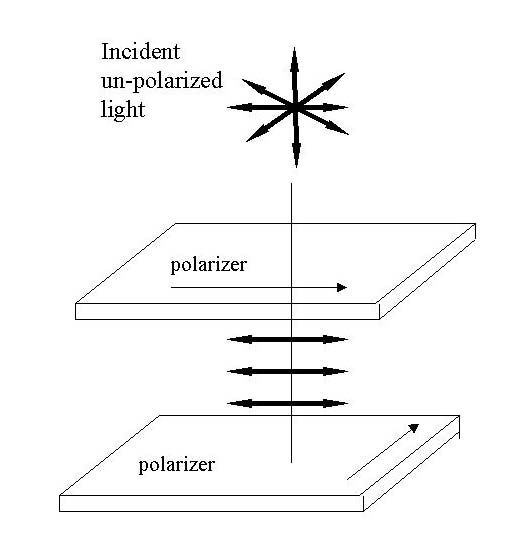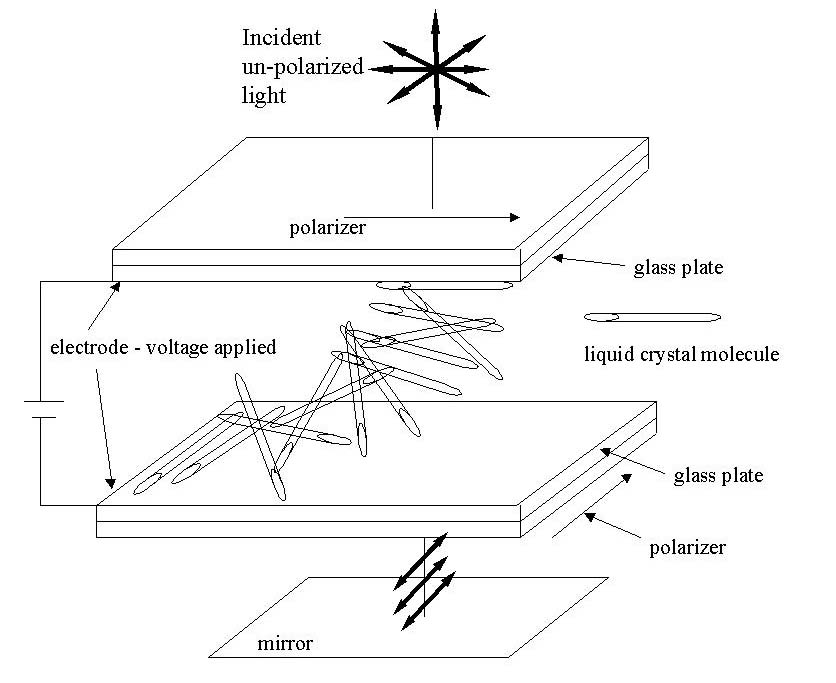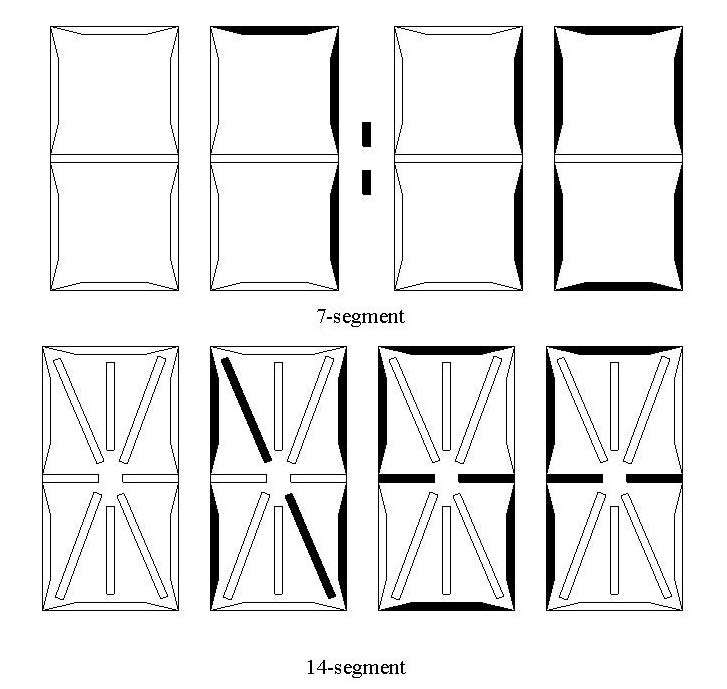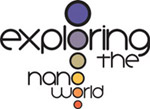Liquid Crystals
Introduction
Liquid crystals were first discovered over 100 years ago in studies of cholesterol and related molecules. Liquid crystals are a fourth state of matter; they have greater ordering than more normal liquids but less ordering than crystalline solids. All phase changes have a characteristic phase transition temperature for a given set of conditions. Liquid crystals have separate transition temperatures where they change into "normal" liquids (melt) and into "normal" solids (solidify).
Liquid crystals have become very common in the last 20 years as displays for electronic devices. This is the result of the unusual optical and electrical properties of liquid crystals. The long thin liquid crystal molecules cause light to travel at different speeds along the molecular axis and perpendicular to that axis. This leads to their ability to rotate the plane of polarized light (see below).
How they work
These long thin molecules also have a tendency to align parallel to an applied electrical field. This response and the optical properties of liquid crystals lead to their application in various electronic devices ranging from watches and calculators to computers and televisions.
Polarizing Filters and Polarized Light
As shown in Figure 1, polarizing filters are materials that allow only the passage of light waves whose electric fields are oscillating in a particular plane.

-
Figure 1. Initially unpolarized light passing through a polarizing filter becomes polarized. The polarized light will not be transmitted by a second polarizing filter turned at 90o to the axis of the first filter.
Unpolarized light passing through a polarizing filter becomes polarized. Polarized light directed onto a second polarizer, oriented 90o to the first polarizer, will not be transmitted. Many natural substances, including liquid crystal materials, have the ability to rotate the plane of the polarized light.
Liquid Crystal Display Watch
Liquid crystal displays (LCDs) have become quite common in watches due to the low electrical power demands of the LCD panel. This panel is composed of two polarizers that transmit light in perpendicular directions, a mirrored surface and a layer of liquid crystal material that is sandwiched between two electrically conducting glass plates. The liquid crystal material used is of the so-called twisted nematic type.

| Figure 2. The liquid crystal molecules in all segments of the panel are precisely aligned in the absence of an applied voltage. Therefore, the entire panel appears silvery because light passes through both polarizers, reflects off the mirrored surface, and then passes back through both polarizers. |
If the surfaces of the glass plates that will be in contact with the liquid crystal molecules are rubbed, the liquid crystal molecules orient in the direction of the rubbing. Figure 2 shows that the molecules have been oriented in the direction in which the adjacent polarizer transmits light, and the intervening molecules gradually rotate their relative orientation to accommodate the 90o change from one polarizer to the other. This gives a silvery appearance to the panel, Figure 2.

| Figure 3. The initial alignment of the liquid crystal molecules is lost when a voltage is applied to a segment of the panel. That segment will then appear black against a silver background. |
When a voltage is applied to a segment of the display, the precise alignment of the liquid crystal molecules is lost. This results in the polarized light from the first polarizer not being rotated by the required 90o to align with the second polarizer. The second polarizer blocks the passage of light and causes that segment of the panel to appear black, Figure 3.

| Figure 4. Examples of 7-segment numeric and 14-segment alphanumeric displays. |
Most of the displays in LCD watches are composed of several 7-segment sections. Each 7-segment section can display one number. The combination of these sections can display the date or time, Figure 4.
In addition to the enabling technology of the LCD, there are several other components that are critical to making the watch function properly. First of all, there has to be a timing mechanism (after all what is a watch that doesn’t keep time worth?). There has to be a controller to tell the display what time or date to display as well as set the time and date. There has to be a power source to drive the display, timing crystal, and controller. And finale, there has to be some means of connecting all of these components together.
Timing crystal
This timing mechanism is a quartz crystal that provides a constant-frequency signal to the electronic circuit in the watch. When certain crystals, including quartz, are excited with an electric field, they vibrate at a particular frequency. This vibration can be sensed electronically to provide a means for observing the vibrational frequency of the crystal.
Controller/IC “chip”
The integrated circuit (IC) or “chip” is programmed with the frequency of the crystal and “knows” how many cycles must pass in each second. Once that number of cycles has passed, it increments the second count by one. After 60 seconds it increments the minute readout. After 60 minutes it increments the hour readout. After 24 hours it increments the date readout, etc. The IC must tell the LCD what segments need to be turned on or off in order to display the correct digits in the LCD. The IC also stores the current date and time and has a means for setting them. This is usually done by connecting two or more “pins,” or leads, from the IC chip together. Since the IC chip is so small, the pins are connected to tabs on the side of the watch that are pressed to make the contact.
Battery
A 1.5 V alkaline batter is used to supply the power to the LCD, IC chip, and timing crystal.
Printed circuit board
In order to make all of the electrical connections, a printed circuit board is used that is placed in a specific position relative to the other components in the watch. The printed circuit board consists of several conductive paths made of metal on a plastic substrate. These paths connect the pins on the IC to the battery, timing crystal, and contact pads for setting the time and date. The connection to the LCD is a little different than the others since it requires more precise alignment of the conductive paths and the LCD in order to properly address each segment in the LCD. This is accomplished with a specially designed piece of rubber.
Conductive rubber laminate
The conductive rubber laminate is a layered structure of alternating layers of electronically conductive and electronically insulating material. This arrangement allows for the conduction of electricity in one direction, but not the other.
Applications
LCDs are being used increasingly where low power consumption and long lifetimes are important. Here are a few examples. If you have seen other applications you would like to share, please send your digital image to:mcondren@cbu.edu. If you do not have a digital camera or scanner, send us your print and we canscan it.
Prints should be sent to:
Prof. Mike Condren
Department of Chemistry
Christian Brothers University
650 East Parkway South
Memphis, TN 38104
Liquid crystals are commonly used in displays such as watches and calculators. Full color displays are common in laptop computers. Here are a few less common applications:
- How about the unisex bathroom doors at Bar 89 that use liquid crystals to convert a transparent door opaque when the latch is closed.
- Electric Privacy Glass is an illustration of how liquid crystals can be used as privacy shades.
- Howstuffworks has a nice page describing, with an animation, how color LCD panels work. LCD panels come in black and white and color. The Howstuffworks site also describes how a LCD panel is built.
- Some automobiles and sport utility vehicles have a LCD moon roof. The amount of transmitted light is controlled by varying the applied voltage to the panel.
References
ALCOM , the National Science Foundation Science and Technology Center for Advanced Liquid Crystalline Optical Materials at Kent State University.
Links to Liquid Crystals and LCDs
Polymer and Liquid Crystals Tutorial , Case Western Reserve University
A presentation on LIGHT AND COLOR IN LIQUID CRYSTALLINE MATERIALS , including the slides, by Lee Y. Park, Department of Chemistry, Williams College, Williamstown, MA 01267 at the Color Symposium of the Anaheim ACS National Meeting, March 21, 1999.
Liquid Crystals - Fascinating State of Matter or "Soft is beautiful" by R.Macdonald, Optical Institute of the Technical University of Berlin, Straße des 17. Juni 135, 10623 Berlin, Germany



